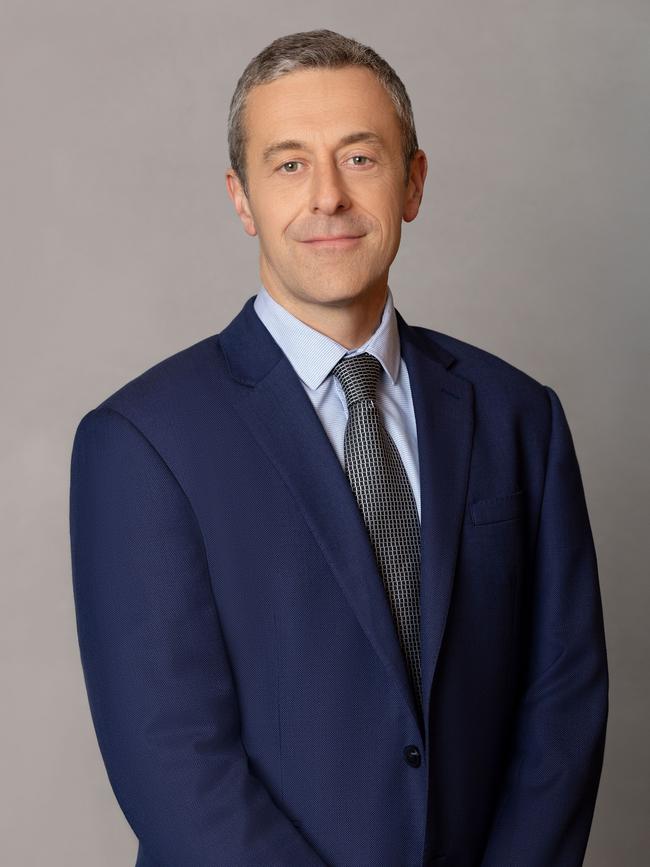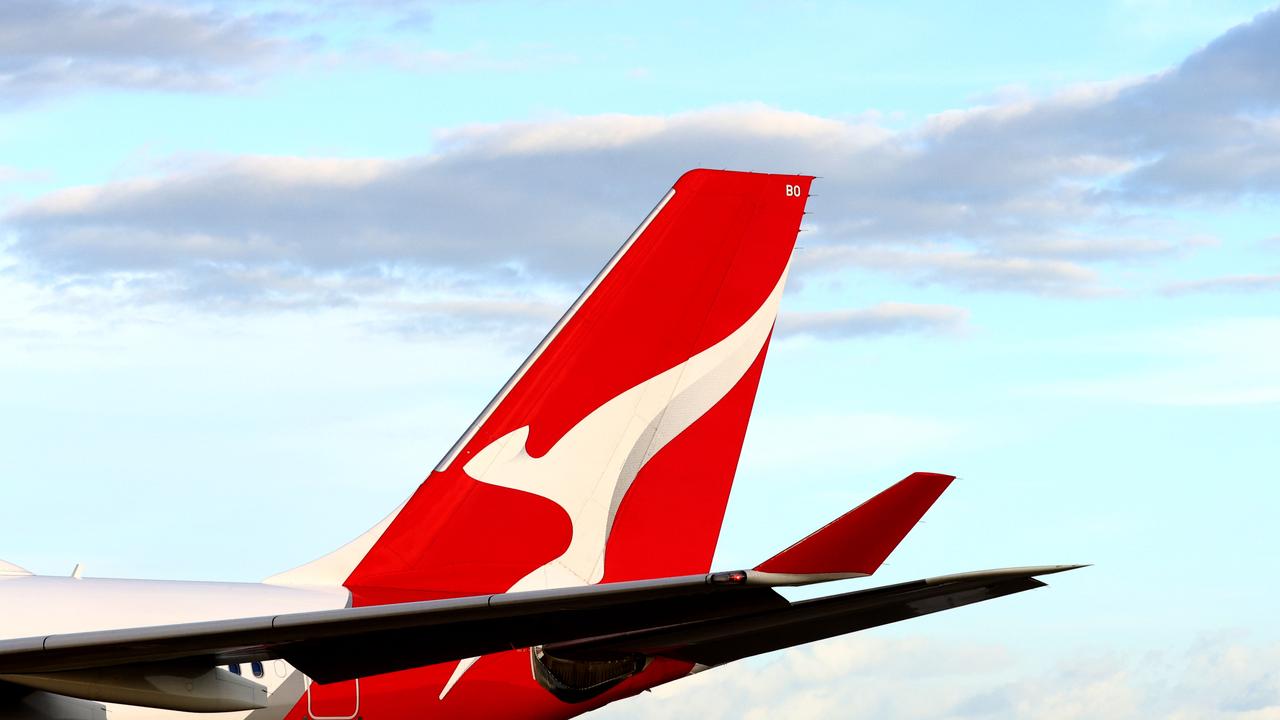Meet the AFL talent scout sitting on top of $250bn
The Future Fund’s new top stockpicker blends neuropsychology and an instinct for football to deliver outsized returns.

Business
Don't miss out on the headlines from Business. Followed categories will be added to My News.
There’s shades of Moneyball around Ben Samild, the man who now oversees $250bn of investments across the Peter Costello-chaired Future Fund.
After all, the former hedge fund trader and market behaviour specialist spent his university weekends at suburban football grounds as a talent scout for the St Kilda Football club. Trying to spot the next Nick Riewoldt provided the perfect grounding for Samild to blend the qualitative and quantitative eye for markets as well as developing an instinct for the long-term.
Samild has been named the new Future Fund chief investment officer, taking the load from his boss Raphael Arndt, who has been doing the job in an acting capacity for the past year.
The Melbourne-based Samild has been one of the Future Fund’s three deputy chief investment officers and his new role follows a stint running its $34bn hedge fund portfolio.

His move into high finance was not through the usual path, with a degree in cognitive neuropsychology used as a starting point. Samild went on to a graduate degree specialising in behavioural finance where he attempted to map out the psychology of how markets work. From there Samild jumped straight into the high-octane world of US hedge funds for several years before moving back to Melbourne into a more grounded path of superannuation, and then for the past decade the Future Fund.
Samild was a recent guest on the UK’s Money Maze podcast where he gave some revealing insights into the investment style and culture of the Peter Costello-chaired Future Fund, which invests in everything from equities, property, hedge funds and more recently has taken direct stakes in infrastructure assets.
There he offered some insight into the secret sauce that makes the Future Fund tick, the so-called “total portfolio approach” that has seen it beat its high-return hurdles while keeping its risk appetite in check. After all, the Future Fund is in charge of the long-term savings of all Australians. The Future Fund’s latest update covering the period to end-March has it delivering 10-year returns of 9.1 per cent annual against a target return of 6.8 per cent. The numbers to end-June are expected later this month.

Samild says the Future Fund’s small investment committee is essentially in the same room making decisions together about the entire portfolio. From there it is a collaborative approach to construct an entire portfolio with all the different managers challenged on areas around liquidity and risk.
“The idea was that you would have a competition for capital. It was a competition for ideas (and) there was a blank sheet,” Samild says on the podcast.
“That approach was a long way from how I would have run it if I was asked to just run a hedge fund portfolio,” he says. He points out he would have constructed a portfolio with more risk-taking, less liquidity or more short-term investing if he was asked to just focus on his own individual target.
“So one has to understand that (total portfolio) and really embrace it and really trust everyone in that room that they’re going to be supported if they go for years and years generating very low returns in the environment that’s very strong in the knowledge that at some point, that will turn upside down and that’s good for the total portfolio,” he says.
“Information, dissemination and collaboration is actually the secret sauce to our relative success”.
Tailwinds to headwinds
The Future Fund outsources its entire portfolio and has resisted expanding with offices around the world. But the core investment team is responsible for fund construction, currency risk and vetting the ideas that are pitched from its fund management partners.
Being a manager of fund managers means part of Samild’s role is keeping the likes of Wall Street investment names like Bridgewater, BlackRock, MAN, Oaktree all in check. He says it needs to be more than a fee-based relationship and one of a two-way partnership.
Samild acknowledges that the Future Fund’s own legislative mandate of delivering long-term investment returns of between 4 per cent to 5 per cent above inflation is more of a challenge than ever given the weight of the $250bn under management.
The target is only likely to get tougher, particularly as investment markets move into a different world.
But it was the low inflation environment and falling cash rates for the past decade that delivered a “giant beta tailwind” that could be relied on to generate reasonable returns regardless of investment style.
“The tailwinds … we feel they’re becoming, at least, not tailwinds and in many cases, headwinds, which should just make our job quite significantly harder. It’ll definitely create opportunities, really interesting opportunities … and a more interesting investment experience.”

Indeed last year Future Fund chief executive Raphael Arndt released a position paper looking at the “New Investment Order”. Arndt said at the time the Covid-19 pandemic represented the turning point for the assumptions that were underpinning investing and markets over the past three decades.
Key to this was a view that inflation is going to be more persistent in future, which meant the Future Fund would have to push up the risk curve by taking on more private equity, moving into commodities such as gold and undertaking more big-ticket infrastructure buyouts.
Samild – who contributed to the position paper – says all the big themes the Future Fund was working on from as early as 2019 were all playing out: Higher inflation; a reversal of globalisation; more conflict; a rush to decarbonisation and rising interest rates.
“All of these things which now seem prescient is very much in the narrative, the everyday narrative, we started talking about and writing down in 2019 and 2020 and then pushing the portfolio in that direction,” he says.
After seeing the world from the eyes of a hedge fund, Samild talks up the purpose of an organisation like the Future Fund, pointing that every 1 per cent additional return he can make represents $2bn.
“And actually that buys a lot of stuff. That’s 30,000 teachers’ salaries if I do my job well … That’s most of a research hospital, it’s a train station. So there’s a tangible impact in what we do that’s very clear and purposeful and meaningful.
“We don’t raise money, we don’t run around trying to convince people that we’re slightly better than the next guy because we did half a per cent better with a half a per cent lower (volatility). That’s not our job. We get to think about investing.
“We sit in the middle of this wonderful expert network, we talk to all the most interesting people in the world, we have all the access, and we try to do our best to put all that information to do a little bit better for every one of our neighbours. That is actually really powerful.”
Change too is also coming to the very top of the Future Fund with Peter Costello’s current term expiring in February next year after a decade in the role.
Treasurer Jim Chalmers will soon begin the process of selecting a new chair and while it won’t be as drawn out as the exercise to appoint a new Reserve Bank governor, it remains another plum job. Internal candidates include former banker and one time Commonwealth Superannuation Corporation chair and Macquarie director, Patricia Cross, while outside the Future Fund former treasurer and current CBUS chair Wayne Swan is also said to be eyeing the role.
More Coverage
Originally published as Meet the AFL talent scout sitting on top of $250bn





